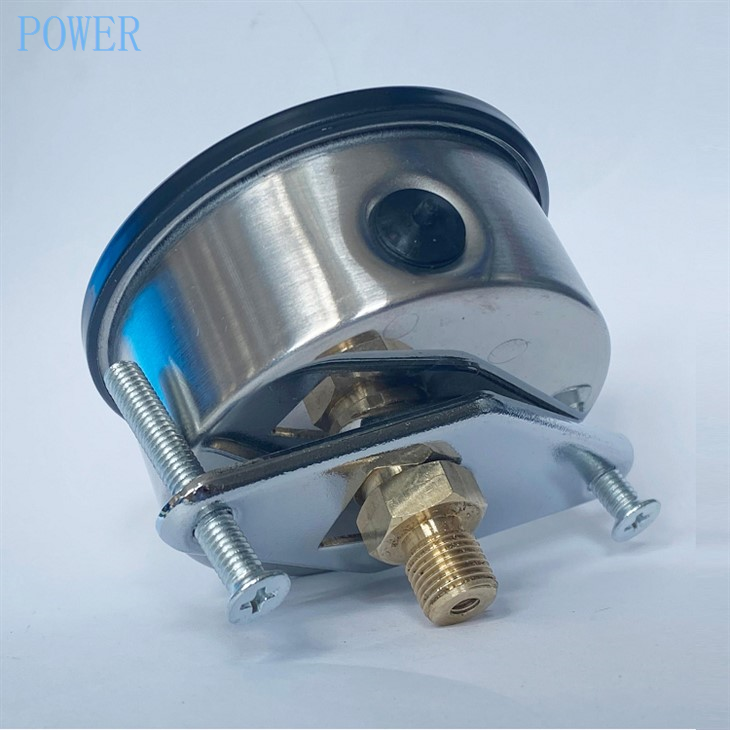How to Protect Pressure Gauges from Pressure Spikes?
Leave a message

Pressure gauge is one of the most widely used instruments in the field of industrial measurement. It undertakes the basic task of monitoring pressure status in various industrial systems. Although the body of the pressure gauge is sturdy, its internal measuring components (such as Bourdon tubes, diaphragms, etc.) are delicate in structure and sensitive to pressure changes, and are easily damaged by sudden pressure fluctuations in the system. Therefore, this article will focus on the pressure shock problems that pressure gauges may face during use, and introduce several typical protection devices and their principles to help users improve the operational reliability and service life of the gauge.
A pressure spike, also often referred to as a pressure surge, shock pressure or water hammer effect, is a sudden, brief increase in system pressure well above normal operating pressure in a very short period of time. This situation is usually caused by a variety of reasons, such as the rapid start or stop of the pump, the sudden opening or closing of the valve, the instantaneous collapse of air pockets in the system, or sudden changes in the operating status of other equipment. This sudden high-pressure shock is undoubtedly a devastating blow to standard pressure gauges designed to measure stable or slowly changing pressure. It may cause the pressure gauge pointer to bend or even fall off, internal transmission gears to be misaligned or damaged, and core measurement components (such as Bourdon tubes) to be deformed or ruptured, resulting in permanent misalignment of instrument readings, internal leakage, and even in extreme cases, causing the instrument casing to rupture, causing safety accidents.
Choose the appropriate range
Before considering how to add external protection devices, you should first start with the selection of the pressure gauge itself, which is a basic measure to prevent damage from pressure peaks. When selecting a pressure gauge, one of the most important considerations is its range. A generally followed principle is that the maximum range of the selected pressure gauge should be at least 1.5 to 2 times the normal operating pressure of the system. For systems with known pulsations or peak pressures, this multiple may need to be higher. By reserving sufficient range space, even if a certain degree of pressure fluctuation occurs, the pressure will not easily exceed the design limit of the instrument, thus reducing the risk of permanent deformation or damage to the measuring element due to overload.
Pressure Buffer
Pressure buffers are protective accessories specially designed to smooth out sudden changes in pressure. It is usually installed between the pressure gauge and the pressure tapping port. Its core working principle is to limit the speed or volume of fluid entering the pressure gauge through the internal structure. Common buffer types include porous sintered cartridge, piston or adjustable needle valve. When the system pressure surges instantaneously, the narrow channel or damping element inside the buffer will significantly increase the resistance of the fluid to pass, effectively slowing down the speed of pressure transmission to the internal measuring element of the pressure gauge, and "flattening" the sharp pressure peak into a relatively gentle pressure change. In this way, the pressure gauge no longer feels a violent impact, but a buffered, relatively mild pressure, thus effectively protecting its internal precision structure from damage and extending its service life.


Current Limiter
The flow restrictor is a device used to protect the pressure gauge. As the name suggests, its function is to slow down the violent fluctuations in pressure by limiting the speed of fluid entering the pressure gauge. Compared with pressure buffers with more complex structures, flow restrictors usually only consist of a joint with a small hole. There are no additional components such as springs, pistons or chambers inside, so they are simple to manufacture, easy to install and low in cost. Its core principle is to use small holes to create resistance to fluid flow. When the pressure in the pipeline changes rapidly, the fluid needs to pass through this extremely small channel to enter the pressure gauge. Since the channel limits the instantaneous flow change, the pressure wave will be "flattened", thereby preventing strong pressure shocks from directly acting on the spring tube or pressure-sensing element in the gauge.
This process is similar to adding a "buffer gate" to the pressure signal, which can effectively slow down medium and low-intensity pressure fluctuations and avoid violent pointer jitter or spring tube fatigue failure. Although the suppression effect of the flow limiter on high-frequency and high-amplitude spike pulse signals is not as obvious as that of a professional pressure buffer, the flow limiter is still a simple and reliable protection method for some occasions where the pressure changes slowly and the pulsation is not violent. It is often used in pump outlets, pneumatic pipelines or hydraulic systems with periodic starts and stops.
Overpressure Protection Valve
Overpressure protection valve, also often called pressure gauge protector or automatic cut-off valve, is a device specially designed to provide safety protection for pressure gauges. Its core function is to immediately cut off the flow of media to the pressure gauge when the system pressure exceeds the set threshold, preventing the pressure gauge from structural damage or misalignment failure under instantaneous or continuous overpressure conditions. Compared with flow restrictors or buffers, the protection mechanism of this type of device is more direct and belongs to the "hard cut-off" type of protection, rather than simply delaying the impact by slowing down the flow rate.







